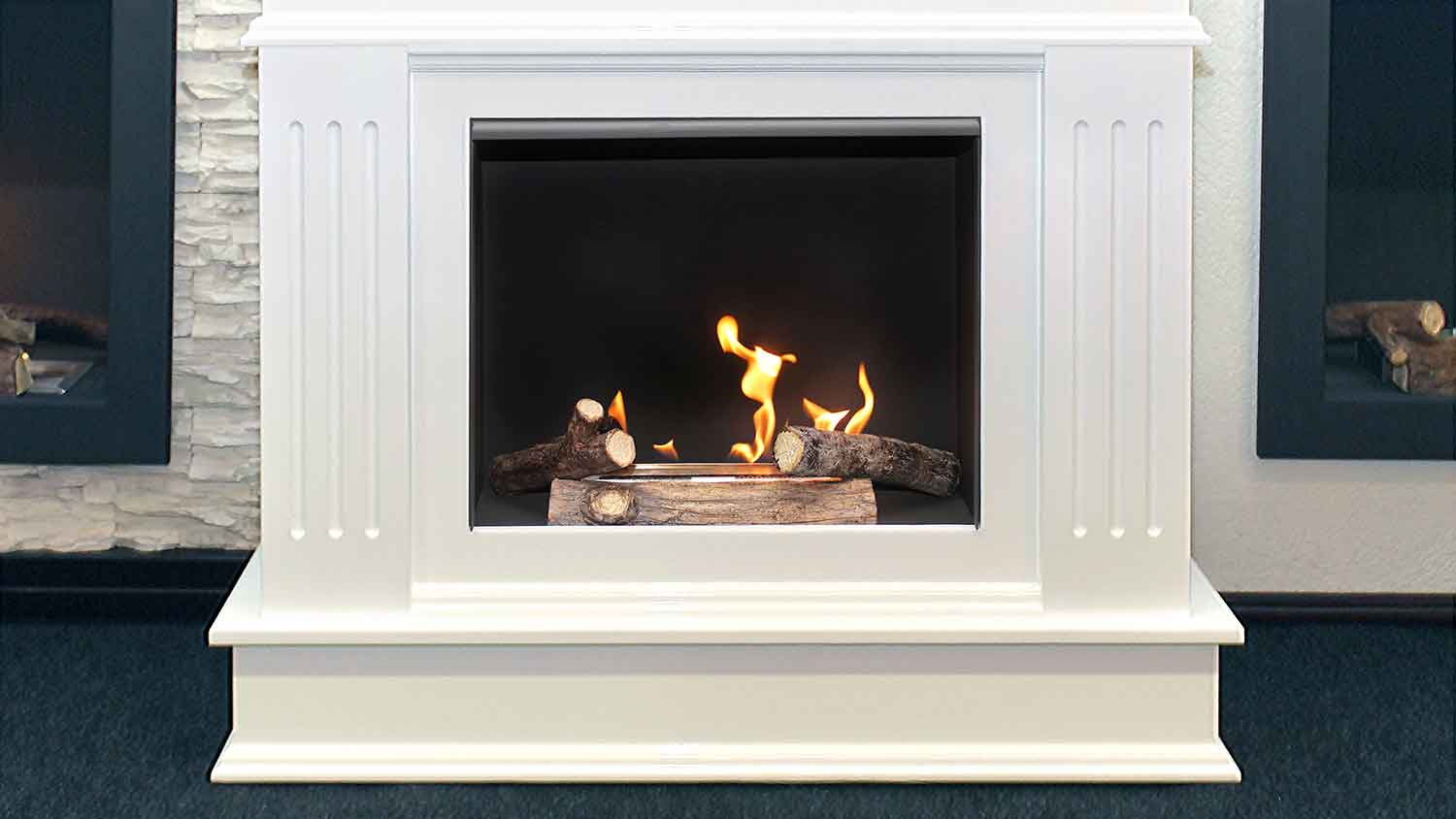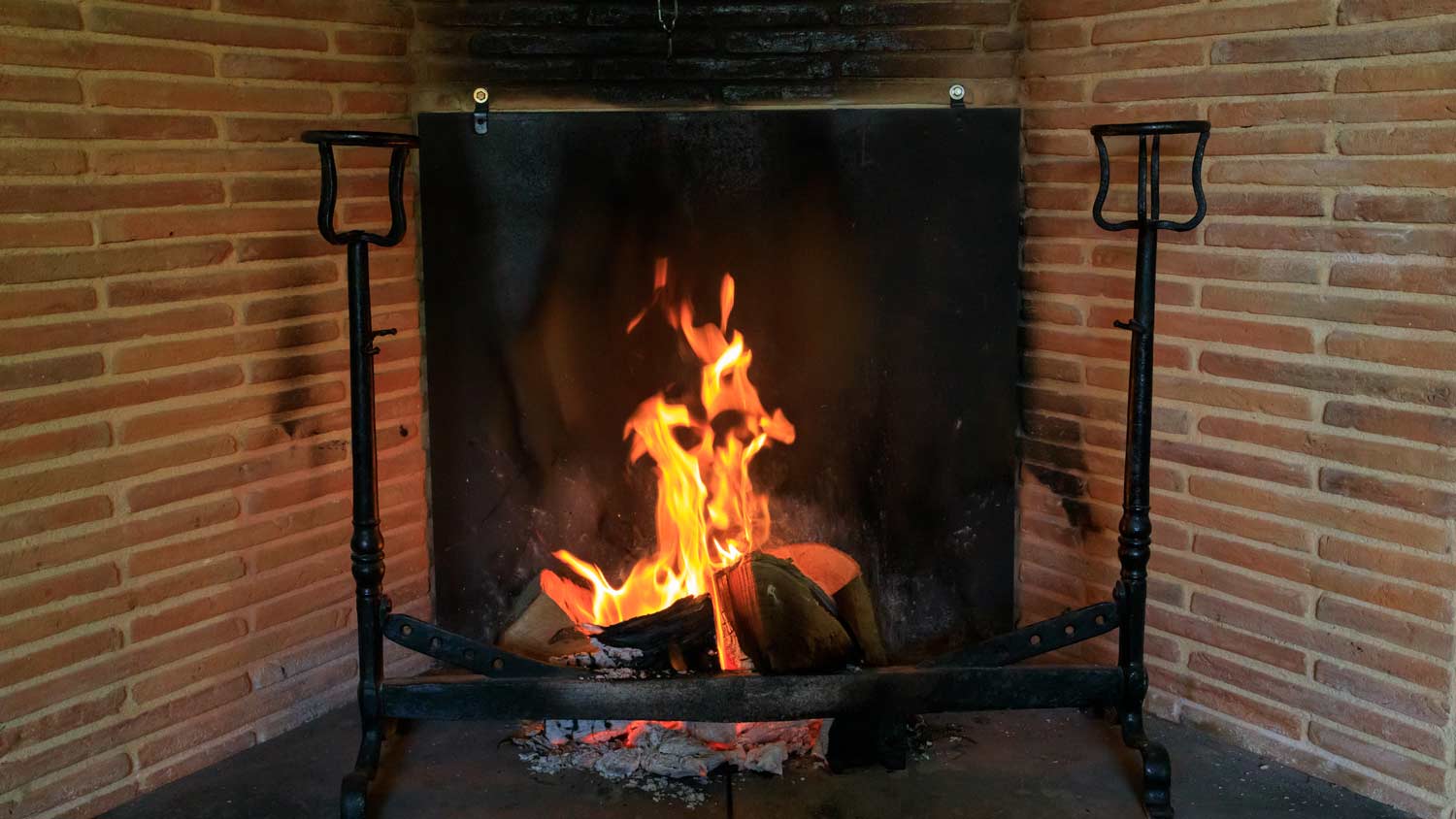How to Remove a Fireplace in 8 Steps
Fireplace removal requires following careful steps


- Screwdriver
- Utility knife
- Socket wrench
- Hammer
- Sledgehammer
- Heavy-duty tarp
- Plastic sheeting
- Dust mask
Although design experts may tell you that a fireplace should be the cozy centerpiece for every home, some people have no interest in using or maintaining a fireplace. And if the fireplace is in poor shape, it probably detracts from your home’s design, rather than enhances it. If it is old and drafty, you may prefer to remove it, rather than trying to restore it. The cost to remove a fireplace by a professional can be steep, averaging several thousand dollars. Consequently, you may want to investigate how to remove a fireplace yourself, even though it is a challenging process.
Prepping to Remove a Fireplace
Removing a fireplace starts with understanding whether or not you can handle the project yourself. This work is no small undertaking, which is why many people hire a pro to take care of it.
If you decide to do the work as a DIY project, you may want to have a dumpster delivered to your home to handle the debris. Even if your local garbage hauling service is willing to take brick and stone, the amount of debris could be so much that you’ll need to rent a dumpster.
You may also need a permit to remove a fireplace properly. If you hire a professional to do the work, they may take care of any permit requirements for you. If not, you will need to check with your local building inspector to determine what rules you must follow.
Take Precautions for Your Home’s Structural Integrity
The steps for how to remove a fireplace are demanding because you have to be able to use a lot of muscle and carry heavy debris. The process also can be dangerous if you are unsure of what you are doing, as an error during removal could affect your home’s structural integrity.
Do You Have a Load-Bearing Fireplace?
Sometimes, the fireplace itself is load bearing for the home. If so, you don’t want to just start swinging a sledgehammer and taking out chunks of the structure. You could cause significant damage to your home, and put everyone in the home in danger, too.
Determining if the fireplace is load bearing follows many of the same steps as knowing if a wall is load bearing. This process can include investigating whether the fireplace structure is perpendicular to the floor joists and ceiling joists, for example.
Ultimately, because you need to be certain, you should hire a structural engineer to assess the fireplace, and determine if it is load bearing. If you choose to hire a professional fireplace installer or remodeler to remove the fireplace, this pro should also be able to determine if the structure is load bearing.
Providing Support for a Load-Bearing Fireplace
If you determine the fireplace is load bearing, the steps to remove it become significantly more complex. Very few people will tackle this job as a DIY project at this point. Hiring a local fireplace remodeler may be the better option for most people, as this pro can safely remove the load-bearing fireplace.
If you do this job yourself, as with the process of removing a load-bearing wall, you need to build a temporary support wall out of 2-foot by 4-foot boards and aluminum columns. You can then start to remove the fireplace.
You may also need to install a structural support beam along the ceiling to replace the structural support that the fireplace provided. Again, this is extremely difficult work for most homeowners to do on their own.
Even if you don’t choose to hire a pro to do the actual work, you should hire a structural engineer to be certain you are taking the proper precautions regarding shoring up the home.
Prepare the Room for the Demolition Process
When you begin taking out the brick and masonry of the fireplace, it’s going to be a messy process. It will generate quite a bit of dust. Try to remove as much furniture from the room as you can before starting the demolition. If you can’t take out some pieces of furniture, cover them with plastic.
Cover the floor in front of the fireplace with a heavy tarp to protect it from any bricks or chunks of masonry that hit the floor. You may even want to place sheets of plywood over the floor near the fireplace for extra protection. Then lay the tarp over the plywood.
Hang plastic over the room’s doorways to keep dust from moving throughout your home.
Place a Cap at the Top of the Chimney
Because you will not use the chimney anymore, you will want to keep precipitation, debris, and animals out of it with a cap. The cap also prevents heat from escaping through the chimney–once the fireplace is removed.
Measure the opening for your chimney, and take note of your chimney style. Then purchase a cap that will fit your chimney size and style.
Although you can cap a chimney yourself, it is a challenging job. It may take a few hours, and you will have to climb on the roof to do it. You may want to hire a local chimney cap installer to do the job for you.
Remove the Mantel
Most mantels will either sit on a hidden shelf or connect to the wall with braces, bolts, and long screws. If the installer used caulk to help secure the mantel, use a utility knife to cut the caulk loose. You may need to use a pry bar to loosen the mantel at the sides, so that you can access the bolts or screws.
If the mantel is a solid piece, it will be heavy. You will likely need another person to help you safely remove it.
Remove the Bricks and Masonry
You can now begin removing the bricks. Start at the top to reduce the risk of the entire structure collapsing and falling.
Use your chisel and hammer (not your sledgehammer) to crack the mortar between the bricks to loosen them individually. Using your sledgehammer at the top of the fireplace, while working over your head or standing on a ladder, is dangerous and difficult. Save the sledgehammer for when you work on the lower part of the structure, and are standing on the ground.
If some of the bricks are loose, or if the masonry is cracked because the fireplace is in poor shape, work carefully in these areas.
If you climb on a ladder to reach the upper section of the fireplace, place the ladder at the side of the structure–not the front–in case the bricks collapse.
It’s helpful to pick up and transport bricks to the dumpster as you go. This will help you keep the debris away from the fireplace, and allow you to access the entire structure.
Try not to demolish the lower section of the fireplace around any unstable bricks that you removed from the upper section, as they could tumble into your legs. Cleaning as you go is really the safest option.
Remove the Hearth
The hearth is the portion of the structure that extends away from the fireplace horizontally along the ground. It serves as a spark guard while also creating a visual element. The hearth can be brick, stone, tile, or concrete, as it must consist of non-flammable materials.
Use your chisel and hammer–or sledgehammer–to break up the mantel. Discard the materials in the dumpster.
If you have a concrete mantel, it may be a single-poured piece. It may even be hollow. You might be able to pry it loose and remove it in one piece, which will greatly simplify the work.
Plug the Flue
After removing the fireplace, you need to plug the opening where the chimney connected to the fireplace inside the home. Use a chimney balloon or flue plug, or seal it another way. With the cap you placed at the top of the chimney in Step 3, the entire chimney should now be sealed on both ends.
Cover the Opening
At some point, you will want to finish the area where the fireplace was located. You will most likely install framing and drywall to ensure the area matches the other walls in your room. You may also need to repair flooring in the area where the hearth was located.
If you don’t want to do this step yet, close off the opening using a heavy tarp or by hanging plywood over the opening. If you don’t want to do the work yourself, you can always hire a local drywall and insulation company to fix the space. You may also want to add insulation in the opening until you permanently finish the space.
DIY vs. Hiring a Pro
Rather than learning how to remove a fireplace as a DIY job, you may want to hire a local professional. It’s messy work, and the brick and masonry are extremely heavy.
However, you could save a lot of money doing the job yourself, especially if you already own the tools. The cost to remove a gas fireplace or a wood burning fireplace by completely removing the structure is similar, ranging from $4,000 to $10,000. If you only want to remove the gas fireplace insert, the cost is less, ranging from $600 to $2,500.
It’s important to note that you will not be able to remove the fireplace yourself without the help of some type of professional. Whether you need to hire a structural engineer to help you determine if your fireplace is load bearing, or a fireplace contractor to do the removal for you, this job will require hiring a pro to help.
Frequently Asked Questions
Removing a chimney is difficult. You may need to take it out brick by brick from inside the walls. If it’s part of the load bearing structure of the home, removing it becomes even more difficult. Chimney removal cost can range from $1,000 to $10,000, depending on the complexity of the job, and whether or not it’s load bearing. For this reason, many people will choose to remove the fireplace and seal the chimney at the bottom and top. You could remove the visible exterior section of the chimney at the roofline before sealing it, too.
Removing and demolishing a fireplace is extremely labor intensive work that also takes a long time. You need to use brute strength to break apart the brick and masonry, and carry the debris to a dumpster. Depending on the size of the structure, you may need multiple days to fully remove it. After removal, you need to determine how you will repair the wall that held the fireplace, which can also be quite time consuming and challenging.
Most of the time, you can remove the fireplace structure and leave the chimney in place. You just would need to seal it at the bottom where it connected the fireplace. You’d also need to cap it at the top. However, you probably should consult with a local chimney inspection specialist to determine whether the structural integrity of the chimney will allow it to remain safely in place without the support of the fireplace.
Typically, a home that has a functioning fireplace will be worth more to a buyer than the exact same home without a fireplace. Having a fireplace is a desirable feature among many home buyers. However, if your fireplace is in poor shape or needs extensive repairs at the time you are trying to sell the home, it may end up detracting from the home’s value in the eyes of buyers, making removal an option worth considering.















